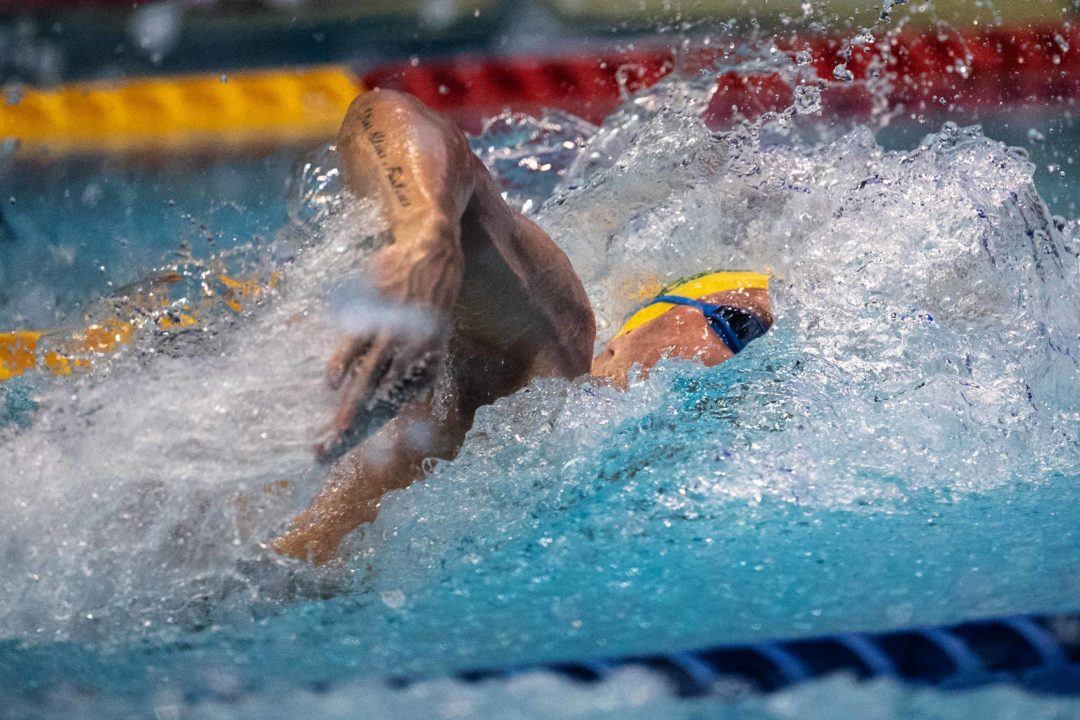2019 SOUTH AUSTRALIAN STATE LONG COURSE CHAMPIONSHIPS
- Saturday, January 19th – Thursday, January 24th (day 1 junior relays only)
- SA Aquatic & Leisure Center
- Prelims at 9am local/Finals at 5pm local
- LCM
- Meet Site
- SwimSwam Meet Preview
- Entry List
Day 1 of the 2019 South Australian State Long Course Championships contained all relays, which livened up the SA Aquatic & Leisure Center crowd with appearances from Olympians and local heroes alike.
Kyle Chalmers fits both those bills, as the 20-year-old gold medalist from Rio split 23.27 to lead-off his Marion club’s mixed 4x50m freestyle relay. Along with Ellysia Oldsen (25.48), Madi Wilson (26.04) and Paul Elson (23.67), the foursome collectively clocked a winning time of 1:38.46, the only result under 1:40.00 of the field.
Wilson was immediately back in action to lead-off Marion’s women’s 4x50m medley relay, backstroking her way to a split of 29.90. The squad would wind up taking first place in a time of 1:57.74, beating the field by almost 3 solid seconds.
Chalmers switched to fly on the men’s edition of the 4x50m medley relay, punching a solid split of 24.52 behind teammate Xavier Castelli‘s lead-off of 26.79 and Simon Moore‘s breaststroke leg of 30.28. Elson anchored in 24.29 to give the team another Marion gold in 1:45.88.
Of note, Castelli typically represents Swim Wales as a member of Cardiff Swimming Club.
In the female 4x50m free relay, Emily Liu (26.81), Bethan Mounfield (26.34), Wilson (26.03) and Oldsen (25.75) combined to top the podium in 1:44.93 while Chalmers’ anchor of 23.74 helped Marion men win their edition of the same relay in 1:36.21.
Finally, in the mixed medley, Wilson led-off once again, giving Marion a start of 30.31 before Moore took over and checked-in with a 30.00 breast split. Oldsen kept the momentum going in 27.30, while Chalmers closed in 23.23. The squad ultimately hit the wall in 1:50.84 for the relay sweep.
Although the aforementioned splits are all on the modest side, the performances are indicative of where swimmers are at just entering 2019, as well as indicative of South Australia not nearly having the depth that powerhouse states Queensland or Victoria do.
